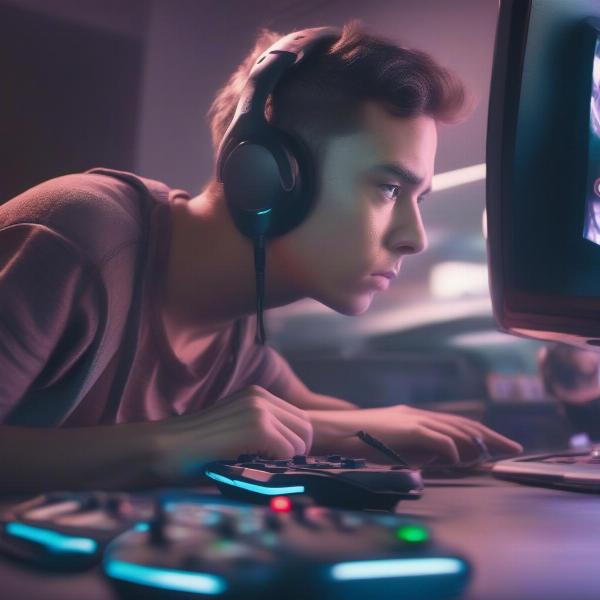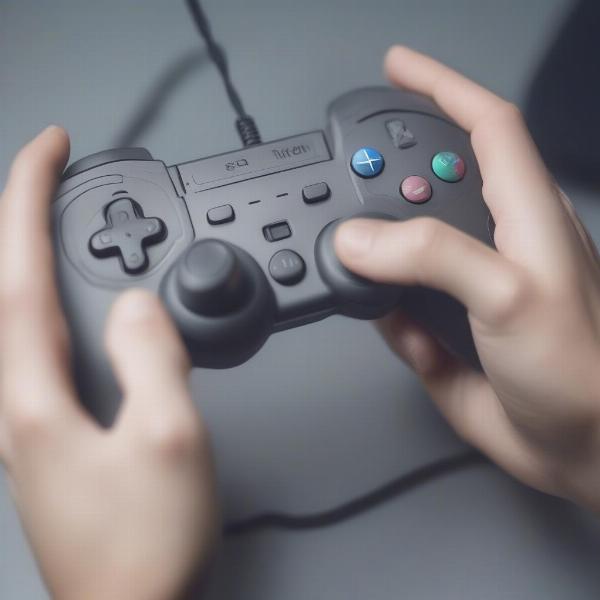Improving your eye coordination is not just about better sports performance; it’s also about enhancing your overall cognitive abilities. At SupremeDuelist.blog, we’re passionate about exploring how games can be tools for development, and few areas benefit as much from gaming as hand-eye coordination. This article will delve into the most effective games across different platforms that can help you hone this essential skill. We’ll explore everything from fast-paced action titles to more deliberate puzzle games, proving that improving your reflexes can also be fun.
We’ll discuss why these games are so effective for eye coordination, how they impact your skills, and what specific aspects of gameplay make them valuable. Furthermore, we’ll highlight specific titles within various genres that have stood out for their ability to push and develop this crucial ability. Whether you are a seasoned gamer or someone looking to improve their reflexes, this article will serve as an in-depth guide to the world of eye coordination enhancement through gaming.
Why Eye Coordination Matters and How Games Help
Eye coordination, also known as hand-eye coordination, is the ability to perform activities that require the simultaneous use of our hands and eyes. It is essential in various daily tasks, from catching a ball to typing on a keyboard. Good eye coordination allows us to quickly process visual information and translate it into the appropriate motor responses. Games play a pivotal role in refining these skills by constantly challenging players to react to on-screen events. For example, a game that demands precise timing and fast reflexes can substantially improve a user’s ability to see, process, and act. Engaging with these kinds of games regularly results in improvements that transfer to real-life skills, making the process beneficial in more ways than one.
 gamer focusing intensely on screen during action game
gamer focusing intensely on screen during action game
The Science Behind Improved Eye Coordination Through Gaming
The reason video games are effective at improving eye coordination has to do with how the brain processes visual information and controls motor skills. When you play a game, especially one that requires quick reactions, your brain is constantly processing visual stimuli, making decisions, and sending signals to your hands to perform certain actions. This constant feedback loop strengthens the neural pathways responsible for eye-hand coordination. Games also challenge the brain to multitask, enhancing cognitive flexibility and attention span, as well as improving reaction times. Moreover, these positive changes in neural networks can be long-lasting if practiced regularly, meaning playing such games is an effective and enjoyable way to better your coordination.
Top Games for Enhancing Eye Coordination
Choosing the right game is essential for the best results. Here are some top games that are particularly effective at enhancing eye coordination, spanning various genres and platforms, suitable for different player preferences and age groups:
First-Person Shooters (FPS): Precision and Speed
First-person shooters are a classic choice for improving eye coordination due to their reliance on precise aiming and quick reflexes. Titles like Counter-Strike: Global Offensive, Valorant, and Overwatch require players to constantly track moving targets and react to dynamic situations. These games challenge not only your aim but also your ability to process visual information and translate that into fast and accurate movements. The fast-paced nature of the gameplay forces players to make decisions quickly, which improves both reaction time and visual tracking. Furthermore, the strategic aspect requires you to manage multiple threats simultaneously which enhances cognitive capabilities and the fluidity with which you use your visual and motor skills together.
Rhythm Games: Timing and Accuracy
Rhythm games like Dance Dance Revolution, Guitar Hero, and Beat Saber are fantastic for improving eye coordination by challenging players to match movements or actions to a visual rhythm. These games demand precise timing and hand-eye synchronization as players need to interpret the visual cues on the screen and react accordingly. These kinds of games enhance the brain’s ability to predict upcoming cues, which can translate to better overall reaction time. For instance, the rapid movement and timing required in Beat Saber is excellent for refining these specific skills. These games offer a fun way to improve accuracy, consistency, and eye-motor control. If you are looking for fun ways to develop your coordination, titles in this genre are an excellent place to start.
Puzzle Games: Strategic Visual Planning
While not as immediately action-packed as FPS games, puzzle games such as Tetris, Portal, and The Witness are incredibly beneficial for eye coordination. These games require spatial awareness, strategic planning, and quick visual problem-solving. In Tetris, for example, players need to quickly analyze the shape of the falling blocks and determine how to rotate them for optimal placement. Games like Portal challenge players to use spatial reasoning and visual cues to navigate complex environments. Furthermore, games in the The Witness challenge the visual cortex to track shapes and patterns in order to solve complex puzzles. Such games help in the development of critical visual skills and cognitive processing which enhances eye-motor connections even without the need for fast motor actions.
Sports Games: Realistic Coordination Demands
Sports games, whether they be the likes of the FIFA or NBA 2K series, or even games such as Rocket League offer a realistic simulation of real-world physical activities, and thus a useful method for improving eye coordination. These games necessitate players to monitor the position of the ball and other players, as well as coordinating their own movements. The precision involved in passing or shooting in these games is excellent practice for improving hand-eye control. For example, in Rocket League, the unique three-dimensional movement and combination of vehicle and ball physics is excellent for challenging spatial awareness and prediction. This is particularly useful in improving the ability to use your motor skills accurately in conjunction with your visual tracking of moving objects. These simulations of real-world sports offer a unique and engaging method of enhancing coordination skills.
Action-Adventure Games: Multitasking Coordination
Action-adventure games, such as The Legend of Zelda series, Assassin’s Creed and Uncharted, combine elements of combat, exploration, and puzzle-solving. They require players to coordinate a multitude of actions while simultaneously navigating complex environments. These games challenge the player’s ability to track multiple objectives, react to changes in the environment and manage resources, thus improving coordination in multiple ways. These games provide a balanced and enjoyable way to develop a comprehensive skill set that is beneficial in both the gaming environment and in real-world activities.
“The benefits of gaming extend far beyond entertainment. Games that require precision and speed are excellent tools for improving hand-eye coordination, enhancing the brain’s ability to process visual stimuli and react quickly,” states Dr. Emily Carter, a cognitive neuroscientist specializing in the impact of digital technology on brain function.
 close-up hands holding game controller playing action game
close-up hands holding game controller playing action game
Optimizing Your Gaming for Eye Coordination Improvement
Simply playing games won’t automatically guarantee improved eye coordination. To maximize the benefits, it’s important to consider the following:
Regular Play: Consistency is Key
Like any skill, eye coordination improves through consistent practice. Set aside regular times for gaming sessions, focusing on games that challenge this skill. Shorter, more frequent sessions can be more effective than infrequent marathon sessions. Aim for at least 30 minutes of focused gameplay on most days to see noticeable improvement. This ensures that your brain is consistently challenged and that new neural pathways are being reinforced.
Focus and Intentionality: Pay Attention to the Details
When gaming, pay deliberate attention to what you’re doing. Focus on your movements, the timing of your actions, and the visual cues on the screen. Avoid mindless button-mashing and instead consciously try to improve your accuracy and response time. By being intentional in your gameplay, you’ll engage more effectively with the challenges that improve coordination. It is the quality of the practice, rather than merely the quantity, that will result in noticeable improvements.
Variety is Important: Diversify Your Gaming Experiences
Don’t limit yourself to just one genre. Different games challenge different aspects of eye coordination. Incorporating various genres, like puzzles, action, and sports, will provide a well-rounded approach to skill enhancement. This variation prevents plateauing and promotes the development of multiple skills, making for a more complete and useful training regime. Diversifying your approach will also improve engagement and keep training fun.
Gradually Increase Difficulty: Push Your Limits
As you improve, gradually increase the difficulty settings in the games you play. This will continually challenge your skills and prevent them from stagnating. This will challenge you to adapt to new situations and continue making gains in precision and reaction time. It is important to progressively push the boundaries of what you can do as this is how skills improve.
Take Breaks: Avoid Eye Strain
Gaming can be demanding on the eyes. Ensure you take frequent breaks to avoid fatigue. Follow the 20-20-20 rule: every 20 minutes, take a 20-second break and look at something 20 feet away. This allows your eyes to rest and helps prevent eye strain. This also means you are more likely to perform well during your gaming sessions.
“Consistent and focused gameplay, combined with a diverse range of games, provides an optimal approach to improve eye coordination. This structured strategy ensures steady progress and prevents any slowdown of improvement,” says Dr. Samuel Jones, an expert in sports psychology and performance training.
 screenshot of player engaging with visual puzzle game
screenshot of player engaging with visual puzzle game
Practical Tips for Transferring Skills to Real-World Scenarios
Improving eye coordination through gaming isn’t just beneficial for more gaming. The skills you develop can transfer to real-world scenarios. Here are some practical tips to maximize this transfer:
Practice Real-World Activities: Apply Your Skills
Engage in activities that require eye coordination outside of gaming. Sports like tennis, basketball, or baseball are excellent choices. Even everyday tasks like cooking, writing, and driving can be viewed as opportunities to apply and refine your coordination skills. Look for ways to actively integrate the skills learned into everyday situations.
Mindfulness in Daily Tasks: Conscious Engagement
Be mindful of your movements in everyday tasks. Pay attention to your hand-eye synchronization while completing daily activities, aiming for precision and control. By being more aware of how you use your hands and eyes in everyday life, you reinforce the skills you’ve developed through gaming. This promotes conscious engagement in the use of your motor and visual skills in a wider context.
Consistent Training: Long Term Investment
View the improvement of eye coordination as a long-term process, and make sure to incorporate activities that challenge this skill into your life on a regular basis. Consistency is essential for maintaining and building upon the improvements you’ve made. Long term commitment is key to making sure these skills are maintained, refined, and constantly improving.
Focus on Balance and Precision: Quality Over Quantity
Whether you’re gaming or performing real-world activities, prioritize precision and focus over speed. Ensure you are focusing on accuracy and control when completing any task. A focus on quality practice will translate into more useful and refined skills. Ultimately, it is better to perform a task correctly slowly, than quickly and imprecisely.
Set Realistic Goals: Monitor Your Progress
Set realistic goals for your skill development, and keep track of your progress. By monitoring your progress, you’ll remain motivated and continue to improve. Celebrate small milestones, and use these as motivation to continue improving. By tracking your progress you can adapt your strategy over time for optimal skill refinement. For instance, if you’re interested in improving your skills in other areas, you might also consider taking a look at some of the best games for 3 year ols and older kids for some simple coordination activities.
Conclusion
Improving eye coordination is an achievable goal that offers numerous benefits both within and outside the gaming world. The key is consistent, focused practice using games and activities that challenge your ability to track objects, plan movements, and react quickly. By choosing the right games, setting realistic goals, and being intentional about your practice, you can significantly enhance your eye coordination. This can translate into real-world advantages, enhancing your performance in sports, academics, and daily tasks. Remember to diversify your gaming experiences and gradually increase the challenge to continually hone your abilities. Here at SupremeDuelist.blog, we believe that gaming can be an enjoyable and effective tool for personal development, and we encourage you to start your journey to improved eye coordination today. If you are looking for even more skill-building games, consider checking out our guide to the best wii games for kindergarteners.
Leave a Reply